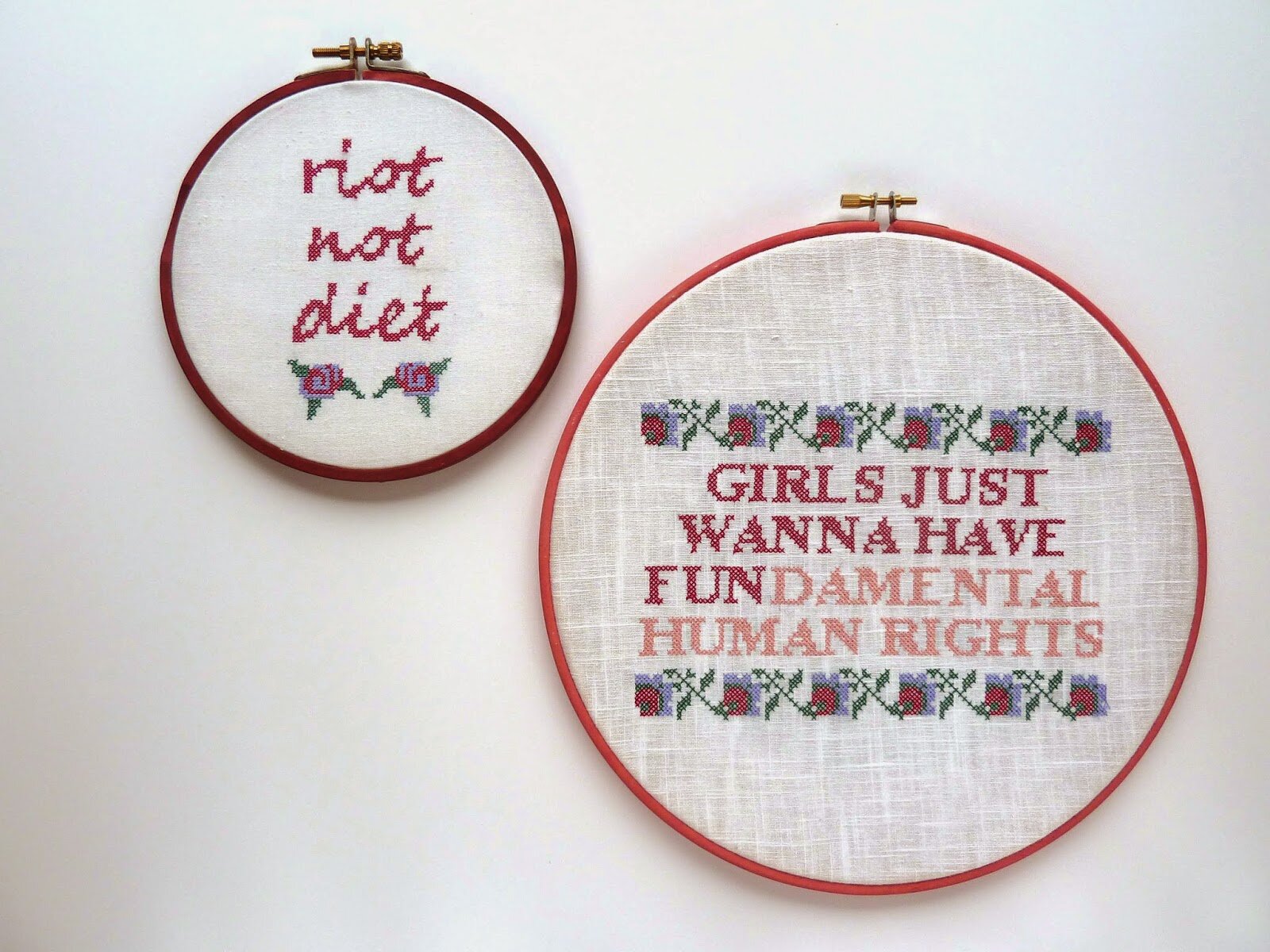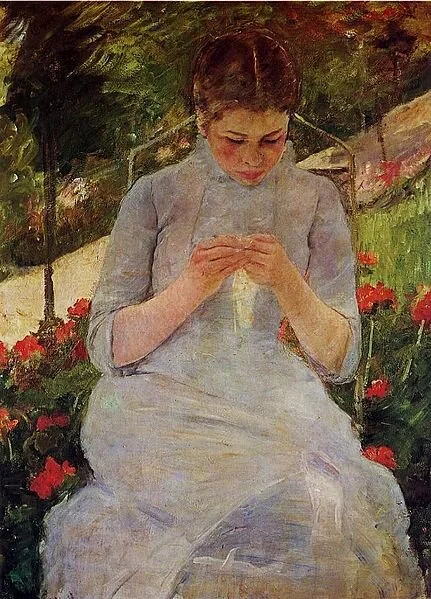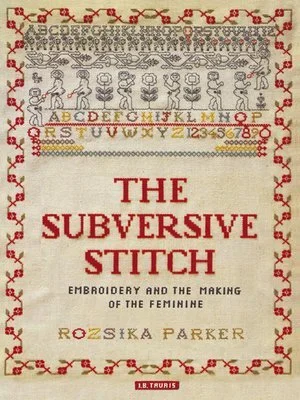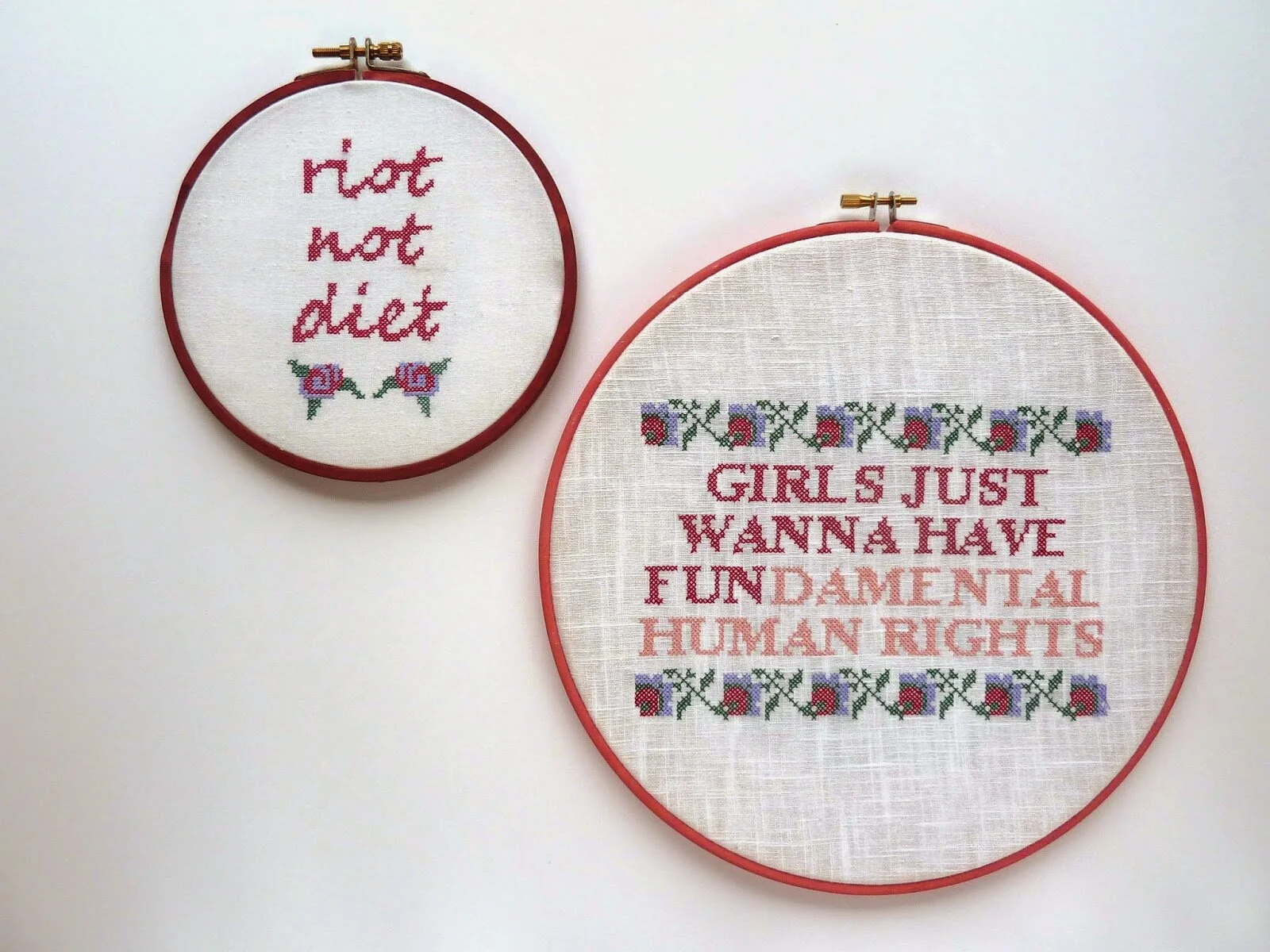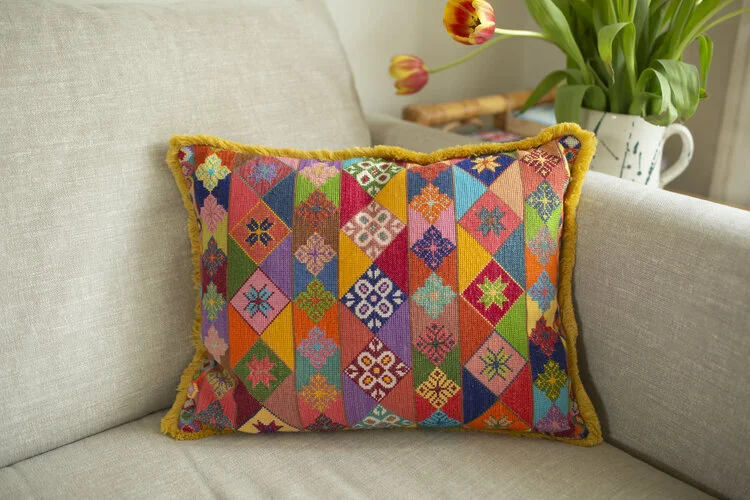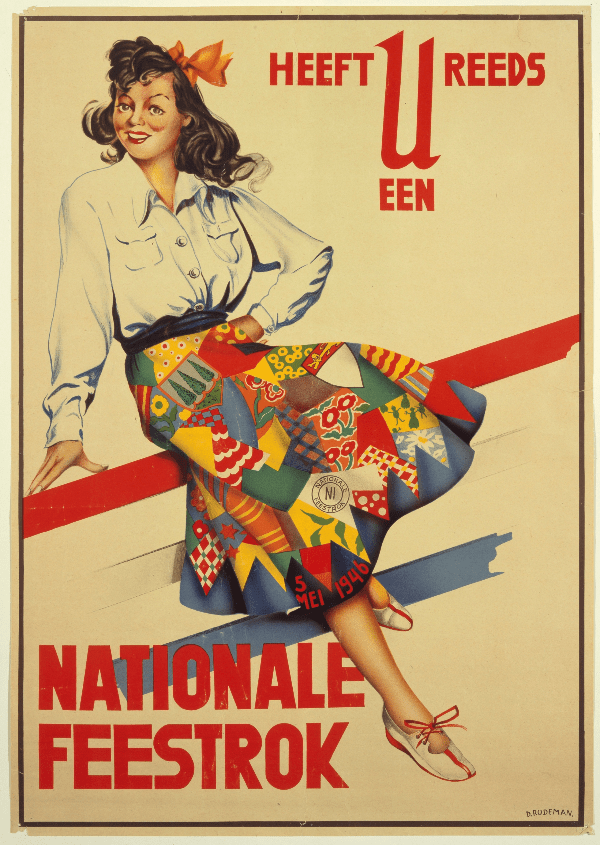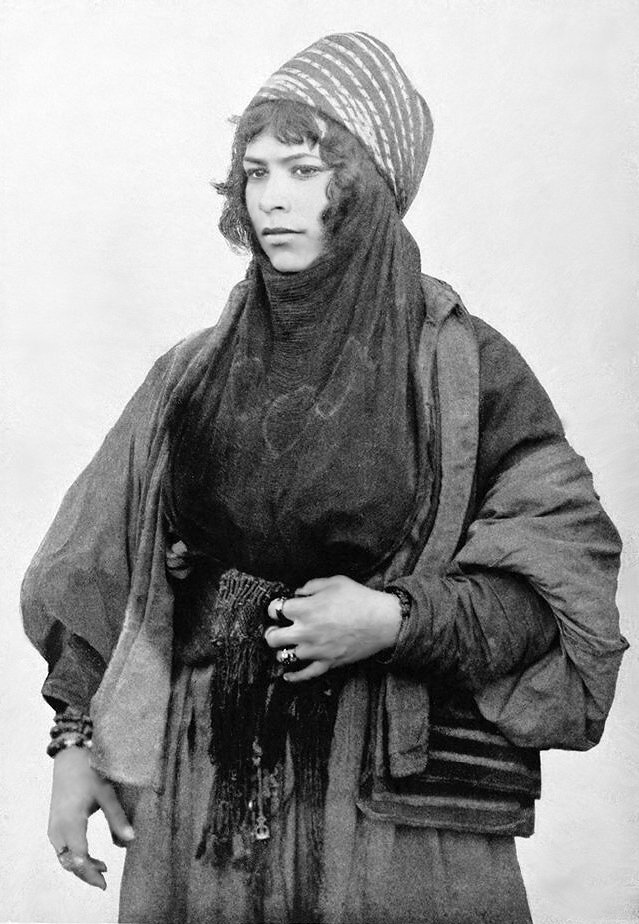The Sisterhood Of The Stitch, an Introduction.
Tool of oppression, instrument of liberation, or both? We look at the contradictions at the heart of the art of embroidery.
The practice of embroidery has traditionally been seen as the embodiment of the female ideal- engendering all of those qualities most desirable to our historical conceptions of femininity: silence, piety, purity, and obedience. It is no wonder when we consider what it has often entailed: A never-ending process of leading the thread to and fro, sitting and awaiting the return of the patriarch at the day’s end. Creating sickly sweet declarations such as ‘There Is No Place Like Home’, which neatly reflect the internalisation of idealised womanhood by the maker. We see this image again and again throughout art history; van Gogh, Renoir, Cassatt, Vermeer, and Velazquez amongst many others, each perpetuating this vision of femininity in all its obeisance.
Diego Velazquez, The Needlewoman.
Mary Cassat, Young Woman Sewing in the Garden.
Throughout the centuries, we too have internalised this image. We have never thought to question, whilst admiring these plentiful bonnet-clad heads bent to their embroidery, what the women within the artwork are thinking. While their hands work it must follow that their minds too are working. This obvious conclusion seems to have conveniently escaped the minds of many a historian over the years. Until that is, Rozsika Parker’s seminal text of 1984 was published. “The Subversive Stitch: Embroidery and the Making of the Feminine,” detailed the true nature of embroidery and all of its contradictions in a way that was impossible to ignore: “the art of embroidery has been the means of educating women into the feminine ideal, and proving that they have attained it, but it also provided a weapon of resistance to the constraints of femininity”. Since the publication of this text, there has been a steady flow of work, both academic and creative, that pushes the boundaries of embroidery and reveals its true, constantly surprising nature.
Rozsika Parker, The Subversive Stitch.
Whilst it is impossible to deny the role embroidery has played in forging and containing a certain, and in some eras aspirational, version of femininity, it is vital to acknowledge it to be, as feminist academic Maureen Goggin believes, ‘both a tool of oppression and an instrument of liberation’. More than this, the practice of embroidery can provide an essential creative outlet and a means of self-expression, and has for centuries been a vital and vibrant part of women’s lives. In the words of E. Tammy Kim, journalist and needlework enthusiast, ‘to embroider is to embellish: to create a fantasia and thus be momentarily free’.
This series of articles will explore this claim and the women who have demonstrated its truth. It will showcase the diverse, disparate and ingenious methods through which embroidery has been used within a variety of surprising scenarios, and throughout the centuries: The Dutch resistance fighter whose textiles redefined the female identity in post-war Holland; the suffragette who utilised needlework to overcome, endure, and process imprisonment; the Queen who plied a secret marriage proposal in cross-stitch; the prisoners of war who communicated with their families through embroidery; the Hmong women who documented and immortalised their marginalised history in thread; the slaves who used encoded quilts as maps to aid their escape efforts; and the contemporary artists exploring this medium to protest, and to enact change- neatly turning the practice historically intended to inculcate and repress the female experience on its head.
Nordiccraft.blogspot.com
Each of these examples presents a relationship between women and thread evidently at odds with the sterile and passive one we are presented with throughout history. The way in which women have so ingeniously used this practice speaks of the power of needle and thread as tools of creative and personal communication as valid and expressive as the pen or paintbrush, but that have been misguidedly and continually underestimated.
This power is at the heart of what we at Sabbara do. We recognise and embrace the beauty, potential and strength in every stitch that the women we work with create. Their beautiful embroideries tell their stories, honour their heritage, and provide them with the financial stability to care for their families. Vitally, the work of Sabbara also brings Syrian women together to share their experiences, support each other, and build a community with whom they can both laugh and cry, depending on the day. In the words of Faten, one of the women supported by Sabbara: ‘when we work, we forget a little the crises that we went through. And through this work we get to meet other women- we sing and laugh and produce beautiful things. We love life.’ Faten, and all of us who share her passion for embroidery are members of a very exclusive club: The Sisterhood Of The Stitch – the very sisterhood this series will go on to explore.
Explore Sabbara artisans’ embroidered works of art..
Sisterhood of the Stitch blog series by Tashy Hughes.
References:
Goggin M et al. (2009) Women and the Material Culture of Needlework and Textiles 1750- 1950. P.3, Ashgate Publishing Limited.
Parker, R. (2010) The Subversive Stitch, Embroidery and The Making of The Feminine, P.ix, I.B Tauris.
Tammy Kim, E. (2018) The Feminist Power of Embroidery. New York Times. Date accessed: 17/06/21 https://www.nytimes.com/2018/12/29/opinion/sunday/feminist-embroidery-korea.html

